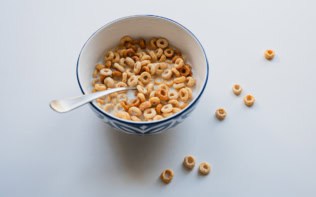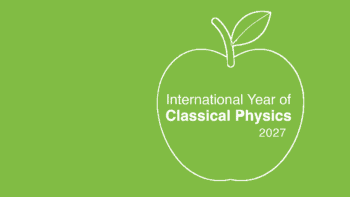
Flat sheets of fresh and dried pasta that morph into tubes or spirals when cooked have been created by researchers in the US and China. The team hopes that the invention could reduce both the amount of packaging needed for pasta and the carbon emissions associated with cooking and transporting it.
Pasta shapes such as penne (tubes) or fusilli (spirals) contain a lot of air. This empty space is great for soaking up sauce, but it makes pasta inefficient to package, store and transport. Now, researchers at the Morphing Matter Lab at Carnegie Mellon University and colleagues have created a flat pasta that morphs into familiar 3D shapes when cooked.
“We were inspired by flat-packed furniture and how it saved space, made storage easier and reduced the carbon footprint associated with transportation,” says Carnegie Mellon’s Lining Yao, who led the research.
Groovy dough
The technique involves inscribing grooves into flat pasta dough that cause it to curl when cooked. The morphing technique relies on the fact that it takes longer to cook parts of the pasta that contain grooves. As a result, the side of the pasta that has a groove expands less when cooked than the opposite side of the pasta, causing the flat pasta to curl. By placing the grooves in specific patterns, the researchers can control what shape of pasta forms when it is cooked.
The team points out that the technique exploits two changes that already occur to pasta when it cooks – it swells up in size and it softens.
The pasta was field tested by Ye Tao, who was then a postdoctoral researcher at Carnegie Mellon and took the pasta on an overnight hiking trip. She found that it took up less space in her pack than conventional pasta and did not break in transit. What is more, the pasta assumed its intended shape when cooked on a portable stove.
Taste and feel
“The morphed pasta mimicked the mouthfeel, taste and appearance of traditional pasta,” says Tao.

Don’t go boiling mad when you discover these scientific secrets to perfect pasta!
Another potential benefit of the flat-pack pasta is that it should cook faster than some conventional pasta shapes, which means less energy is required. That could be significant because about 1% of greenhouse gas emissions in Italy are associated with cooking pasta, according to the researchers.
The team has also shown that the same grooved technique can be used to morph the shape of flat silicone sheets. “This could potentially be used in soft robotics and biomedical devices”, says team member Wen Wang, who was a researcher at Carnegie Mellon.
The pasta is described in Science Advances.



